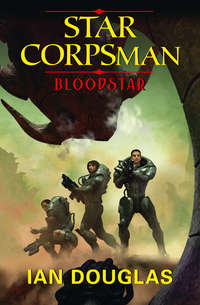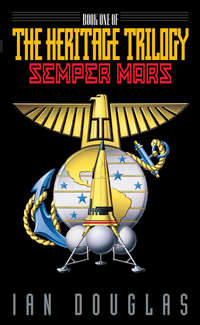
Полная версия
Singularity
Four of the nine Chinese ships had returned to Earth as well. Five, however, under the command of Admiral Liu Zhu, had elected to join America and CBG-18. Koenig wasn’t sure, yet, if that represented Hegemon approval of his strategy … or if Beijing, independent of the Confederation, was simply determined to keep an eye on him.
Fifty-eight ships, then—more than twice the number surviving after Alphekka—were about to emerge at Texaghu Resch, and Koenig needed to have a long-anticipated conversation with the two nonhuman beings on board the star carrier America.
“Admiral,” Koenig’s personal electronic secretary said, “the two Agletsch are here to see you, as you requested.”
“Thank you. Send them in.”
The office door opened, and the aliens walked in, followed by a Marine guard.
Humans called them “bugs” or “spiders,” though they were, of course, unrelated to anything that had ever lived on Earth. Flattened and slightly elongated disk-shapes on sixteen slender, jointed legs, each stood as tall as a short human but took up considerably more space. Instead of chitin, their integuments were red-brown, soft, almost velvety, with blue and yellow markings like the reticulated patterns of some snakes. Legs and what passed for faces were black; four eyes on stalks emerged from each face, and Koenig was only now beginning to realize that the movements of the eye stalks added emphasis to their speech. Silver markings on their bodies were decoration of some sort, while each had a metallic device below its face that served as a translator.
Both Agletsch—their names were Gru’mulkisch and Dra’ethde—were, technically, female; their nonsentient males hung like grotesque, gelatinous leeches from their faces.
Koenig stood as they entered. “Thank you for coming,” he told them.
“We appreciate you seeing us, Admiral,” Dra’ethde told him. “We have been … concerned. We have not been allowed into your CIC or bridge since leaving Arcturus.”
Even now, Koenig had trouble telling the two apart, though there were subtle differences in the decorative silver inlays on their skins. A subroutine programmed into his cerebral implant had learned to recognize those patterns, however, and threw the name of the individual up against his visual field when one spoke. Dra’ethde appeared to be the senior of the two, though the niceties of Agletsch social structures were not yet well understood.
Koenig nodded to the Marine. “You can leave us, Staff Sergeant,” he said. “Wait in the office outside.”
“Aye, aye, sir.” The Marine turned and left, the door sliding shut behind her.
“I do understand you concern,” Koenig told the aliens when they were alone. “You were excluded from the bridge and CIC on my orders.” He thoughtclicked an icon in his in-head display, and a three-dimensional image winked on in the air above his desk. It looked, Koenig thought, like a tangled mat of hair a meter tall, slowly rotating in space. “When we found these. Can you blame me?”
“No, Admiral Koenig. But we regret that you still do not … understand. Yes-no?”
The fact was that the two aliens were bugged—a humorous-enough statement given what Agletsch looked like to humans. Each being contained, hidden away within her brain, something called a Sh’daar Seed. The image of one, magnified several million times, hung in the air between them now.
The implants had only been discovered at Arcturus, when information concerning the destination of CBG-18, Alphekka, had been relayed from the Agletsch to a Sh’daar data web within a H’rulka community in the atmosphere of Alchameth, a gas giant circling the star Arcturus. The H’rulka were another species within the Sh’daar galactic web, and that intelligence had been transmitted to the Sh’daar forces stationed at Alphekka. The things were tiny, the metal in them masked by the silver inlays on their carapaces. Only after the transmission had been detected had close internal scans picked the things up, microscopic tangles of artificially grown components that apparently served as minute electronic nodes of an extended Sh’daar intelligence.
They allowed the Agletsch to serve as far-traveling eyes and ears for the absent Sh’daar, rulers of an extended galactic empire that had never been seen by humans … or by the members of any other species with which Humankind had communicated thus far. It was assumed that the Turusch and other nonhuman species aligned with the Sh’daar also had the implants. There were, Koenig knew, a number of Turusch now living in a base on Earth’s moon run by the Office of Naval Intelligence.
He wondered if they were broadcasting details of their life there to the Sh’daar net.
“And what is it that we don’t understand?” Koenig asked.
“That the Sh’daar Seed only becomes active when another node is close by.”
“And what do you mean by ‘close by’?”
“A few thousand of your kilometers.”
Their translators, Koenig thought, were doing a good job of turning Agletsch measures and numbers into human units. At least he hoped that was the case. A misunderstanding here—or a deliberate lie—could make for a serious intelligence leak to the enemy. That was why he’d ordered that the Agletsch be restricted in their freedom of movement on board the America—and why they now had a Marine guard following them everywhere except within the shielded suite of compartments designated as their quarters.
Because they were alien, with alien ways of thinking and of expression far more extreme than any mere outward differences in appearance and biology, Koenig was careful when talking with them. They were here as guides; the Agletsch were interstellar traders whose homeworld lay somewhere within Sh’daar space, but who also ventured far beyond those boarders into other regions not claimed by the Sh’daar. When the Sh’daar had issued their ultimatum and the war had begun thirty-eight years ago, numerous Agletsch had been trapped inside Confederation territory. Some had left; many had stayed. The possibility that those who had stayed were acting as enemy agents—as spies—was worrisome to the Office of Naval Intelligence … but there’d never been any indication that the Agletsch were in contact with either the stay-at-home Agletsch or their Sh’daar masters.
When the Turusch defenders of the manufactory complex at Alphekka redeployed their fleets to trap the incoming Confederation battlegroup, Koenig had suspected an electronic hand-off of data at the H’rulka colony on Alchameth. Microscopic medical scans had turned up the implants; the Agletsch themselves had admitted that they were Sh’daar Seeds, a term that seemed to mean quasi-sentient computers that acquired, stored, and eventually uploaded data to a Sh’daar equivalent of the e-Net.
The question, so far as Koenig was concerned, was just what the range of the Sh’daar Seeds might be. If it truly was a few thousand kilometers, there was no chance of the Agletcsh passengers alerting Sh’daar forces in the target system upon Emergence.
But what if America engaged with enemy ships later on, within the target system’s core? If America passed within a thousand klicks or so of a Turusch battle cruiser, what information might be transmitted to the enemy?
That was why Koenig had ordered them to stay off the bridge and out of CIC, the nerve centers for both the carrier and the battlegroup. What they couldn’t see and hear, the Sh’daar Seed couldn’t store.
Unless there were other twists to the alien technology Koenig didn’t understand, or which the Agletsch were concealing.
How the hell could you tell if an alien was lying?
Another fleet commander might have ordered the two aliens thrown in the brig and surrounded by a Faraday cage … or even killed. Koenig didn’t want to take a step that drastic, not yet. The Agletsch so far had been most helpful in their general information about the Turusch Directory, and about the nature of the worlds listed there.
“A few thousand kilometers?” Koenig said after a long and thoughtful pause. “I’ll accept that.” He thoughtclicked an in-head icon, and the holographic image above his desk winked out. “I still don’t want you in certain sensitive areas of the ship, though. I don’t know if these Seeds you’ve described can probe our electronic systems, or if they’re just eavesdropping on what we say.”
“This we do understand, Admiral.”
The information transmitted to the Sh’daar at Alchameth had actually consisted of a speech Koenig himself had made over the shipboard intercom. He’d mentioned that their designation was Alphekka, and the Sh’daar Seeds, evidently, had been smart and autonomous enough to figure out which star system that was—the Sh’daar didn’t call it “Alphekka,” certainly—and pass on the warning.
If he understood what the Agletsch were describing, billions, perhaps trillions of separate Sh’daar Seeds were planted inside individual members of various subject species: Turusch, H’rulka, Nungiirtok, and some tens of thousands of other species. Each individual then, became a free-moving and independent computer node within an incredibly vast and far-flung network.
No one had yet intercepted a Seed transmission, however. How powerful they might be, what their range was, how easily shielded such signals might be, their duration, all of that was as yet unknown.
Koenig wondered if Gru’mulkisch and Dra’ethde knew how many high-tech sensors were focused on their bodies at every hour of shipboard day and night, using America’s own internal electronic Net, with the intent of capturing and recording a transmission in order to learn more about its capabilities.
“There remains much that we do not understand about the Seeds’ capabilities ourselves,” Dra’ethde told him. “We know simply that they are.”
“And that they are what you would call a fact of life,” Gru’mulkisch added. “Yes-no?”
“We would very much like to know,” Koenig said carefully, “if we can use access to the Sh’daar Seeds—meaning through you two—to communicate with the Sh’daar directly. Since you delivered their ultimatum thirty-some years ago, we’ve not been in direct contact. Being able to talk to them might help us avoid needless bloodshed.”
Not to mention, Koenig added to himself, the extinction of the humans species.
“It is possible,” Dra’ethde told him, “though it would take time to pass communications from node to node all the way to the old galactic core. We would need to be in contact with another transmission node, however.”
“Hold up, there,” Koenig said. “What did you just say? ‘Old galactic core’? I’ve not heard that term.”
“Indeed? We don’t know anything about it either, save that it is what the Sh’daar call their … not homeworld. But the region where their homeworld lies.”
“Is that the core of this galaxy? What we call the Milky Way?”
The aliens exchanged a momentary glance of weaving eyestalks. “We don’t know,” Gru’mulkisch said. “It is simply a name. Gu reheh’mek chaash. You would say ‘old galactic core’ or perhaps ‘center of the old galaxy,’ yes-no?”
The galactic core, Koenig thought, that teeming mass of billions of close-packed stars residing at the heart of the Milky Way, lay roughly 25,000 light years away in the direction of the constellation Sagittarius. It was old, yes—as old as the galaxy, which by best estimates had formed about 12 billion years ago. But why distinguish it as the old core? Or the old galaxy …
Was Gru’mulkisch suggesting that the Sh’daar had come from a different galaxy?
That set the hairs at the back of his neck prickling. No one knew quite how large the Sh’daar expanse of space actually was, though intelligence estimates based on interviews with the Agletsch suggested that it embraced something like half of the galaxy—perhaps as much as two thirds, perhaps as little as a quarter. That was big enough … but if they had the technology to travel between galaxies, to come to this one from some other galaxy hundreds of thousands or even millions of light years away …
What the hell did they mean by “old galactic core”?
He flagged the term with a mental note. He would forward it to the ONI boys down in Intel and see what they could make of it.
Koenig considered the two aliens for a moment. First Contact with the Agletsch had occurred in 2312, nearly a century ago, but humans still knew remarkably little about them. The Agletsch as a species were interstellar traders, star-faring merchants, of a sort. Not traders of material goods, of course. One solar system contained much the same in the way of natural resources—water ice, organic volatiles, metals, energy—as the next. Even cultural artifacts—artwork, say, or textiles or gemstones or commercial items of technology—could be carried between the stars far more efficiently as stored patterns of information rather than the original bulk items.
So the Agletsch traded in information, a kind of universal medium of exchange. And for ninety-three years they’d shared very little about themselves, or about their galactic masters, the Sh’daar. As Koenig understood it, merchants like Dra’ethde and Gru’mulkisch traveled far beyond the borders of their own stellar polities and lived for decades as visitors to other cultures, other civilizations, where they recorded what they could, and determined what, if anything, the new civilization had to trade. One observer had likened them to alien Marco Polos in the courts of alien Khans. Another had once suggested that they were a kind of living Encyclopedia Galactica, slowly accumulating information on all sentient life throughout the galaxy … which they would trade to others in exchange for more such information.
Had they accidentally let slip that tidbit about the old galaxy? Koenig tried the direct approach. “So tell me … where are the Sh’daar from?”
Gru’mulkisch twisted her eyestalks in what Koenig had been told was an expression indicating humor—the equivalent of a human smile. “We can’t tell you that, Admiral,” she said. “That data would be extremely valuable, yes-no?”
“There must be an exchange,” Dra’ethde told him. “We have been asked about this before by your intelligence people. …”
“And what would you accept in exchange for that information?” Koenig asked.
“We are not aware of anything you possess worth such an exchange, Admiral,” Gru’mulkisch said. “We regret this … but what you ask is mish’a’ghru. Of first importance, you might say, yes-no?”
“In fact,” Dra’ethde added, “I regret having mentioned gu reheh’mek chaash at all, and perhaps I was irresponsible in doing so. But since the words will not help you, no harm has been done, yes-no?”
The phrase translated as “yes-no,” Koenig knew, was what the xenolinguists referred to as an agreement manipulator, a way to get others to agree with you, to be on your side in a conversation, and to disarm any potential hostility. Individually, the Agletsch were more agreeable to talk with than many humans Koenig knew.
But talking with them tended to lead in unsatisfying circles. Even if the Agletsch translator units perfectly shifted between the English and Agletsch languages, there was a hell of a lot missing on both sides simply because of differences in culture, attitude, and worldview.
Koenig wondered how much of their professional reticence was due to business considerations, and how much to the fact that both of them carried Sh’daar Seeds that, no doubt, were listening in on this conversation and recording it.
“We are about to emerge from Alcubierre Drive,” he told them. “I can’t allow you on the bridge or in the CIC, but I’ve given orders to dress the crew’s lounge for external view, and you can watch from there.”
“Thank you, Admiral.”
“My senior aide, Lieutenant Commander Nahan Cleary, will be with you. If I have questions of you two, I’ll pass them to him. Okay?”
“Quite acceptable, Admiral.”
“And if either of you have insights about what’s happening, I’d appreciate it if you could share them with him. Such information will be considered to be under the terms of your contract.”
“Of course, Admiral.”
The two Agletsch had volunteered to accompany America and her battlegroup on this mission as guides—which meant that they were expected to share data with Koenig and his officers without the need to haggle over the informational price of each item. His understanding was that the Agletsch mission on Earth had been “paid” for their services with several exabytes of information drawn from the New Library of Congress in Columbus, and from the British Library in High London. He wondered what, specifically, the Agletsch had learned in exchange for the services of these two.
No matter. He expected them to deliver.
“You’re certain,” Koenig said, “that you have nothing to add to your report about this system we’re about to enter?”
“Quite certain, Admiral,” Gru’mulkisch said. “We know that the system is of importance within the Sh’daar network, but we’ve not been here before. We do not believe it to be inhabited, but cannot tell you if it is defended, or if there is a military base or outpost.”
“In fact, we hope to acquire profit here ourselves,” Dra’ethde added. “Yes-no?”
By profit, Koenig assumed the Agletsch was referring to new information, something even the Agletsch did not know.
“What happened to the Chelk,” Koenig told them, “might well happen to my species. If you two learn anything new, I’ll expect you to share it with us. I will invoke the contract if I must.”
“We understand this, Admiral.” Gru’mulkisch sounded almost contrite … or possibly cautious, as though she were picking her sixteen-legged way across thin ice.
“And we appreciate you including us in the investigation,” Dra’ethde said.
“We will be emerging from metaspace in another hour,” Koenig said. “I suggest you get down to the crew’s lounge and make yourselves ready. Mr. Cleary will join you there.”
“Thank you, Admiral,” Gru’mulkisch said. “We expect that this will be of great profit to both our peoples, yes-no? A place neither human nor Agletsch has yet ventured.”
But Koenig still wondered if the many-legged beings could be trusted.
VFA-44
Approaching Texaghu Resch System
112 light years from Earth
1058 hours, TFT
Lieutenant Gray tried to relax within the close embrace of his fighter. Always it was the waiting that was hardest. He checked his in-head time. Five minutes.
The Dragonfires were doing a drop-launch this time, free-falling with the centrifugal force of America’s rotating hab modules. When it was time to launch, Gray’s fighter would pivot ninety degrees, pointing out and down relative to the turning bay, the magnetic clamps would release, and the hab module’s rotation would fling him into space with a half-G of acceleration—about five meters per second. Once clear of America’s immense forward shield cap, the squadron would orient on the local system’s sun and then boost; fifty thousand gravities would bring them close to the speed of light in just a whisker under ten minutes.
“Hey, Skipper?” It was Miguel Zapeta, on the squadron channel. “Any word yet on who we’re gonna be fighting? Or if we’re going to be fighting?”
“Nothing yet, Zap,” Gray replied. “We’ll be the first to know, right?”
“Yeah. Except the scuttlebutt I heard was that the bugs know, and they’re leading us into a trap.”
“So, you’re believing scuttlebutt, now? Who told you that shit?”
“Uh … a gal I know in S-2.”
S-2 was the designation for America’s intelligence department. “Ah, well if Naval Intelligence said it, it must be true, right?”
He heard several chuckles over the squadron channel. Good. Loosen them up a bit. You don’t want them thinking too hard before a drop.
“We’ll be emerging far enough out-system that we’ll have plenty of time for a look around, okay? The entire Sh’daar galactic fleet could be in there, and they’d never even see us if we dropped in, took a look, and then jumped back into Alcubierre Space.” He hesitated, then grinned as he added, “Yes-no?”
That raised laughter from the waiting Dragonfires. The odd patterns of Agletsch speech and their constant use of the phrase “yes-no” was well known to everyone on board America by now.
“Sounds like we have an Agletsch loose in the squadron,” Rostenkowski said, laughing. “Since when did they start driving Dragonfires?”
“Dragonfires, PriFly,” Wizewski’s voice broke in. “Is there a problem?”
“Negative, CAG,” Gray replied. “No problem.”
“Can the chatter in there and focus on your finals. Emergence in three minutes. Drop in sixty seconds after that.”
“Aye, aye, sir.”
No sense of humor, that one.
He was glad the newbies in the squadron could laugh, though. They’d been training hard in sim, but the real deal was never like electronic simulations, no matter how bad-assed realistic the downloads.
If they could enjoy a joke now, they ought to be okay.
He hoped. …
CIC
TC/USNA CVS America
Outer System, Texaghu Resch System
112 light years from Earth
1103 hours, TFT
Emergence.
The star carrier America dropped into normal space as her Alcubierre bubble collapsed. Since she’d been motionless relative to the volume of space wrapped up inside the Alcubierre field, she emerged traveling at a velocity of only a few kilometers per second—the difference in relative velocities between this patch of space, and the space within the Kuiper Belt of HD 157950. The transition released a great deal of potential energy as light and hard radiation, a flaring burst spreading into and through the new star system at the speed of light.
Koenig studied the new system, both represented by icons within the tactical tank, and as revealed by optical sensors across the bulkhead viewalls of the Combat Information Center. They’d emerged ten astronomical units from the local star—a little farther than Saturn was from Sol. There were planets—five visible immediately, and there likely would be others as the ship’s navigational AIs scanned local space.
“Admiral?” a familiar voice asked. “This is CAG. So you still want to launch fighters?”
“Wait one,” Koenig told him. “We need to see what we’re launching to.”
Data continued to cascade in from the AIs scanning the system. Two inner rocky planets, small enough and close enough to their primary that they likely were too hot for Earth-type life. Planet III, 1.5 AUs from the star, was a small gas giant, about the size of Neptune. Beyond that, at 3 and 5 AUs, were two more rocky planets, both dazzlingly bright and probably encased pole to pole in planet-wide sheets of ice.
“Astrogation,” Koenig called. “Give that gas giant a close look. Maybe it has Earthlike moons.”
He was thinking of Alchameth, circling the star Arcturus, and its moon Jasper.
“We’ve been looking, Admiral. We’ve spotted several small moons—rocks, really—but nothing like a real planet.”
“Carry on, then.”
He felt a small bite of disappointment. Because of this system’s listing in the Turusch Directory, he’d assumed there would be an inhabited planet here—if not one with an oxygen-nitrogen atmosphere and temperate climes comfortable for humans, then one with the reducing atmosphere and hot, sulfur-laden conditions enjoyed by the Turusch.
The truth of the matter, though, was that habitable worlds of either type were painfully few and far between within that sliver of the galaxy explored so far by Humankind. The chances that a world of near-Earth mass would just happen to lie within the band of liquid-water temperatures around a star were slim; the fact that the Confederation had discovered as many as twenty where humans could walk unprotected—Chiron and Circe and Osiris and the others—spoke more to how many stars were out here, not to how common other Earths might be.











